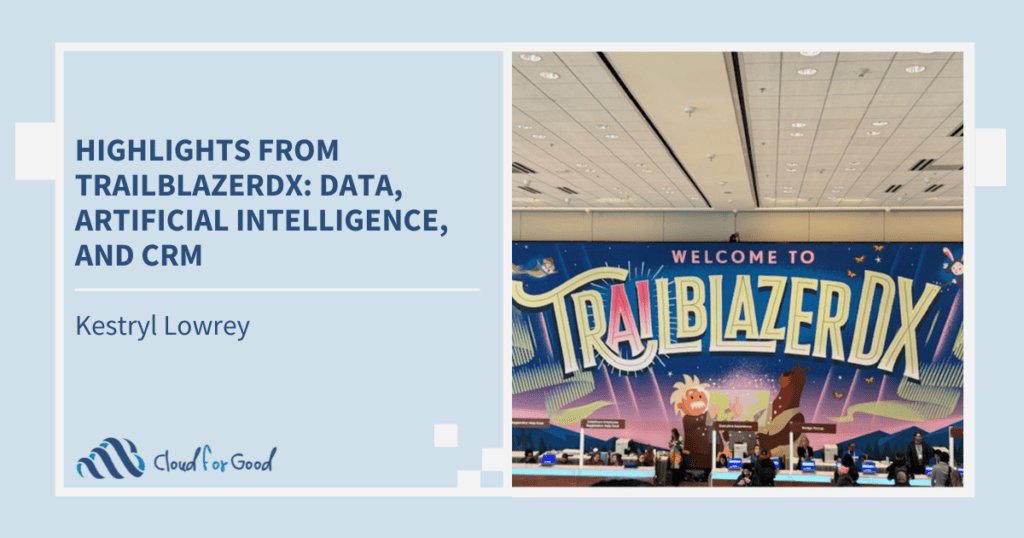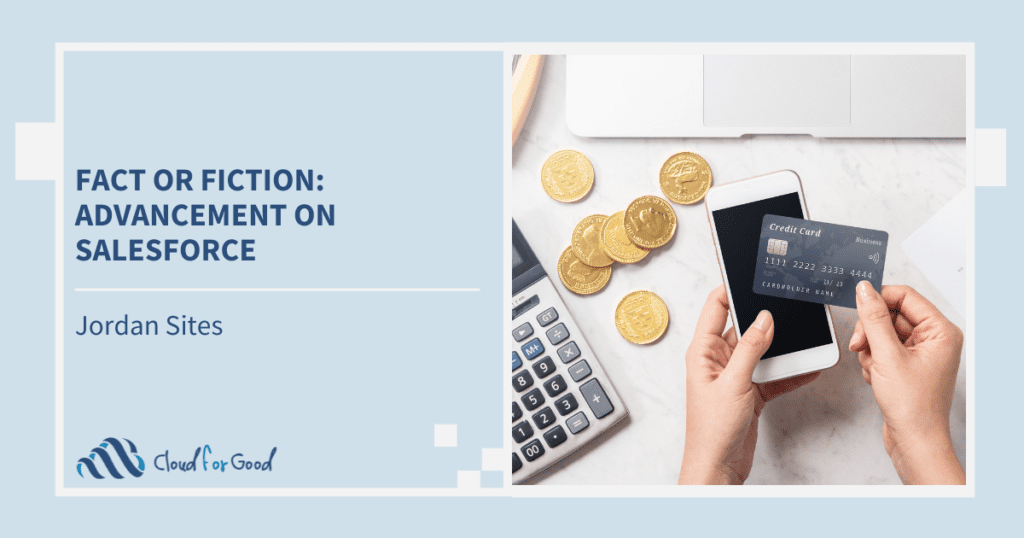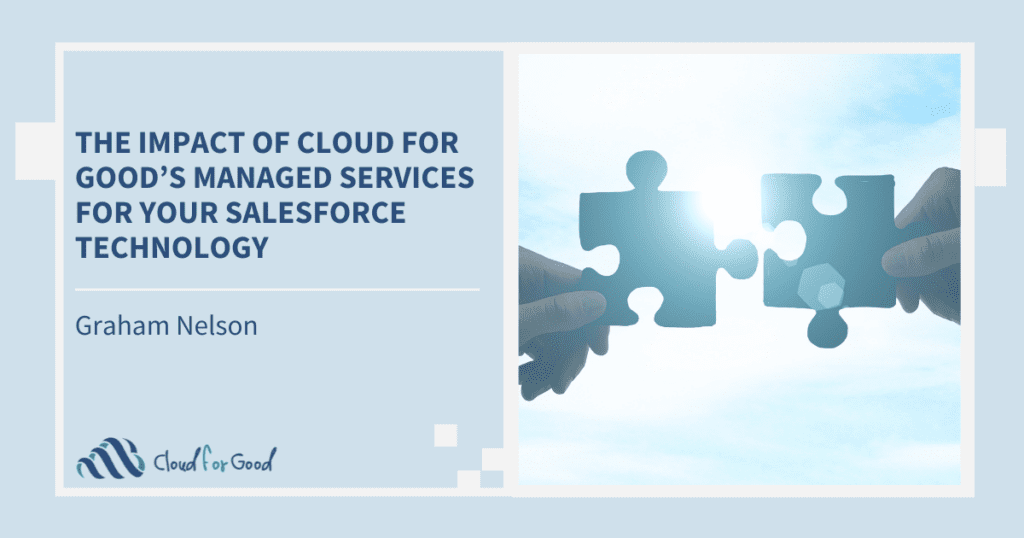With the sweet tune of Auld Lang Syne still fresh in your ears, I’d like to wish you a happy and healthy 2017. The new year is always a time to resolve to do better, try harder, and move farther toward your goals, but we all know keeping your New Year’s resolution is easier said than done.
With that said, I’d like to take this opportunity to encourage you to make some professional resolutions you’re sure to keep. Want cleaner data? Dreaming of that elusive “360 degree view” of your organization’s constituents and stakeholders? Envisioning a world in which your programming, fundraising, and marketing efforts are seamlessly integrated into technology all your staff members can use? You’ve come to the right place. Let’s make some Salesforce New Year’s resolutions. And this year, let’s keep them.
RESOLUTION #1: In 2017, our data will be cleaner than ever before.
I’d be willing to bet that, on the day the first database was invented, so was the first duplicate record. Messy data makes working in any system challenging and nobody likes spending their time sifting through possible duplicates or correcting invalid mailing addresses. If your organization has resolved year after year to clean up their data, let 2017 be the year you finally achieve data cleanliness.
Plan big, but start small – what are the goals and priorities you have for your data clean-up project? Once you’ve established your goals, create small, daily, habitual tasks to inch your way to the finish line. If your organization is using Salesforce, the tedious task of cleaning up data can be made easier with native tools within Data.com (like matching and duplicate rules), or a third-party tool like Apsona for Salesforce or Demand Tools. However you choose to approach it, be sure to spend some time deciding which tool is right for your organization’s specific data management needs.
RESOLUTION #2: This year, we’ll know every interaction our organization has taken with each of our constituents.
If you read that resolution and thought to yourself, “this lady is living in a fantasy land,” I’m happy to report that I am not as crazy as this resolution may make it seem. You can indeed, with the power of Salesforce, track the interactions your organization takes with each of your constituents. Whether it’s an event, participation in your program, a donation, a one-on-one meeting, a phone call, or an email marketing campaign, Salesforce has tools available for you to log (and then view and report on) a nearly limitless number of interactions with your constituents and stakeholders.
If you have Salesforce and aren’t using the Activities object, take a look at these Trailhead modules and set up a system to begin logging Activities at your organization. Engagement Plans are a useful way to leverage Activities, especially for development teams. Campaigns are a great way to track large scale initiatives, events, and marketing strategies. Honestly, the possibilities are endless. You can even send your emails and calendar appointments directly to Salesforce. (Wondering how? Check out these instructions to configure your Outlook settings in Salesforce, or consider using a partner like Cirrus to integrate your email and your Salesforce instance.
RESOLUTION #3: Stewardship for our donors will be strategic, meaningful, and well-planned.
As a former development officer, I know how it works: you do your beginning of the year planning, best intentions in mind and at heart, but after a few months most of your best-laid plans have already gone awry. This year, why not resolve to not only stick to your plans, but also capture those plans in Salesforce?
Start by establishing which metrics will help you best determine the success of your fundraising efforts. Will you be successful if each donor in your pipeline has received at least three touchpoints from your organization this year? If your team grows its prospect pipeline by 50 more potential donors? If you receive more payments on pledges in Q3 of your fiscal year instead of waiting to collect in Q4? If any of these metrics apply to you (or if you have others), start your year off by building a report, and possibly a dashboard, to track them. Schedule the report to email to you once a week. I promise, when you see your metrics coming at you more often, you’ll start identifying the strategies that are working best for your donors.
Once you know what you’re measuring toward, it’s time to plan how you’ll get there. As I mentioned above, Engagement Plans are a great way to pre-populate a set of touchpoints or tasks associated with specific groups of donors. When paired with the Nonprofit Success Pack’s Levels object, they become even more strategic and meaningful. You can associate a specific engagement plan with every level at your organization, making stewardship dynamic, customized, and streamlined.
RESOLUTION #4: All our teams will use the same platform for managing their work and measuring their goals.
The customizability of Salesforce, paired with the power of the community behind the Power of Us Hub, means that Salesforce need not be a one-team solution at your organization. With some creativity, a strategy, and the right implementation partner if necessary, your Salesforce instance can become a place for all the teams at your organization to communicate, house data, and analyze their work.
Bring your teams together to talk about their individual and collective information needs. You will likely find there are many interconnected priorities across your organization. Once you know every team’s needs, build a road map to address them in Salesforce. If your program team needs access to marketing data to understand how program participants are being contacted, make sure they have access they need to Marketing tools and analytics. Your fundraising team would probably appreciate having a clearer line of sight into program data. If that data is in Salesforce, you can customize a report or dashboard to give them the information they need, whenever they need it.
Refer to your road map throughout the year to ensure you’re building, customizing, and maintaining your Salesforce org in accordance with the priorities your team laid out. The more proactive you are about making changes in the system, the stronger your system will be.
RESOLUTION #5: Our organization will retain valuable institutional knowledge and leverage that knowledge in our daily work.
Every organization struggles when staff turns over. Some people take all their knowledge and expertise with them, leaving their former colleagues to pick up the pieces and attempt to keep things moving in their absence. Fortunately, Salesforce provides a platform to address this in two ways: one, by housing information in a way that can get new hires up to speed quickly and provide them with vital information as they onboard, and two, by continually collecting that information so the details that live in your colleagues’ heads can now live in your constituents’ records.
Activities, of course, are a great way to house information on meetings, calls, or other interactions with your constituents. Be sure that, for every staff member that interacts with a constituent, there is a record in Salesforce detailing the topic and outcome of that interaction. Make use of the Addresses object in NPSP to house current, former, and seasonal mailing addresses. Actively track Relationships and update them regularly. Ensure Households properly reflect the people who occupy them and that organization Affiliations are accurate.
By the end of the year, even by taking two or three of those steps, I’d wager you’ll have captured more institutional knowledge than you have in the previous five years. Join us on January 19, 2017 at 2:00 pm EST, to learn how to turn these resolutions into actions by joining our webinar.
Related Posts





